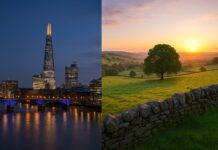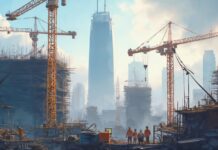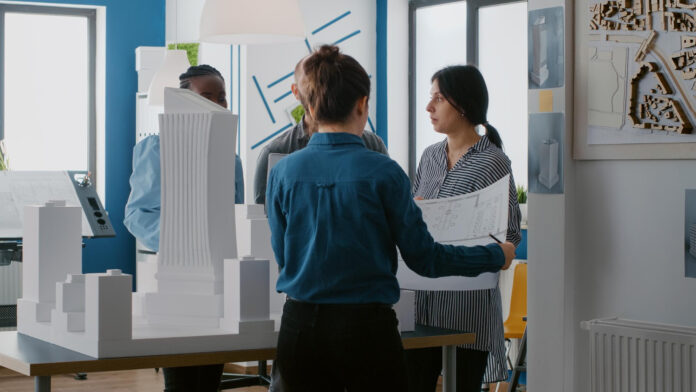As the real estate industry evolves, the need for flexible and innovative solutions grows. Temporary structures offer a dynamic approach to property showcases, reshaping how developers present new projects. These adaptable spaces serve as a versatile tool for creating engaging marketing environments.
In recent years, the demand for adaptable spaces in the real estate sector has increased. Developers are seeking innovative ways to showcase their properties effectively, leading to the rise of temporary structures. These solutions provide developers with a flexible and cost-effective alternative to traditional buildings. By using such spaces, they can create engaging environments that attract potential buyers and investors. In this context, Marketing Suites have become an important element in enhancing property showcases.
The role of temporary structures in real estate
Temporary structures have become an essential component in the real estate landscape due to their flexibility and adaptability. These structures are designed for quick assembly and disassembly, offering developers a versatile option for showcasing properties without committing to permanent construction. They are typically constructed using modular components, allowing for easy customization to suit various project needs.
The use of these structures allows developers to adapt quickly to changing market conditions and project requirements. As they can be relocated or modified with minimal disruption, temporary structures provide an ideal solution for short-term real estate marketing needs. This adaptability is particularly beneficial when launching new developments or promoting properties in different locations.
Moreover, temporary structures enable developers to respond swiftly to customer feedback and industry trends. By providing a flexible platform for showcasing properties, they allow for real-time adjustments in design and layout, enhancing the overall appeal of the property being marketed.
Beyond their practical applications, temporary structures serve as powerful branding tools that create memorable first impressions for prospective clients. These installations can be strategically positioned at high-traffic locations or directly on development sites, maximizing visibility and accessibility. The architectural flexibility inherent in modular design allows developers to create sophisticated spaces that rival permanent showrooms in terms of quality and presentation. From incorporating interactive technology displays to designing immersive walkthrough experiences, temporary structures provide a blank canvas for innovative marketing approaches that engage visitors on multiple sensory levels.
Benefits of using temporary structures for property showcases
Temporary structures offer several advantages that make them an appealing choice for property showcases. One significant benefit is their cost-effectiveness compared to permanent buildings. Constructing a traditional building involves substantial financial investment and time, whereas temporary structures require significantly lower costs and resources.
The speed of construction is another key advantage. These structures can be erected and dismantled rapidly, facilitating quick deployment for marketing events or property launches. This efficiency enables developers to capitalize on market opportunities without delay, ensuring timely exposure of their projects.
Customization is also a standout feature of temporary structures. Developers can tailor these spaces to reflect specific project aesthetics and branding requirements. This ability to customize enhances the marketing suite experience by creating an environment that resonates with potential buyers’ expectations and desires.
Another compelling advantage lies in the reduced regulatory burden associated with temporary installations. Unlike permanent constructions that often require extensive permitting processes and compliance with stringent building codes, temporary structures typically face simplified approval procedures. This streamlined approach accelerates project timelines and reduces administrative overhead, allowing developers to focus resources on creating compelling showcase experiences rather than navigating bureaucratic complexities. Additionally, the temporary nature of these structures provides developers with valuable flexibility in testing different marketing locations without long-term commitments, enabling data-driven decisions about where to establish permanent sales centers.
Design considerations for temporary structures
When designing temporary structures for real estate showcases, several factors must be considered to maximize their effectiveness. Aesthetics play a crucial role in attracting potential buyers; hence, attention must be given to creating visually appealing designs that align with the brand’s image.
Functionality is equally important in ensuring that the structure meets practical needs during property showcases. Features such as lighting, ventilation, and accessibility should be carefully planned to provide a comfortable experience for visitors while highlighting key aspects of the property on display.
Additionally, environmental sustainability is becoming increasingly relevant in design considerations. Choosing materials and construction methods that minimize environmental impact not only aligns with industry trends but also appeals to environmentally conscious consumers who value sustainable practices in real estate development.
Sustainability and environmental impact
The use of temporary structures aligns well with current sustainability trends within the construction industry. By their nature, these structures contribute to reducing construction waste as they can be reused or repurposed across different projects. This reusability minimizes resource consumption associated with traditional building methods.
Furthermore, the materials used in constructing temporary buildings are often selected based on their eco-friendly credentials. Sustainable materials help lower the carbon footprint during both production and usage phases while maintaining structural integrity throughout their lifespan.
The energy efficiency of temporary buildings also contributes positively towards environmental goals by incorporating energy-saving technologies such as solar panels or efficient insulation systems into their design strategy—features that not only reduce operational costs but also demonstrate commitment towards sustainable practices within the real estate sector.

























